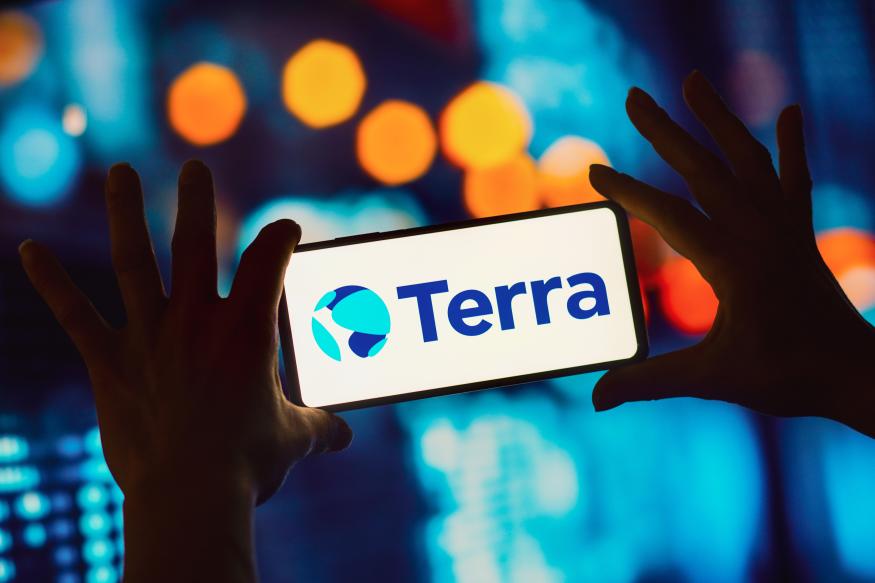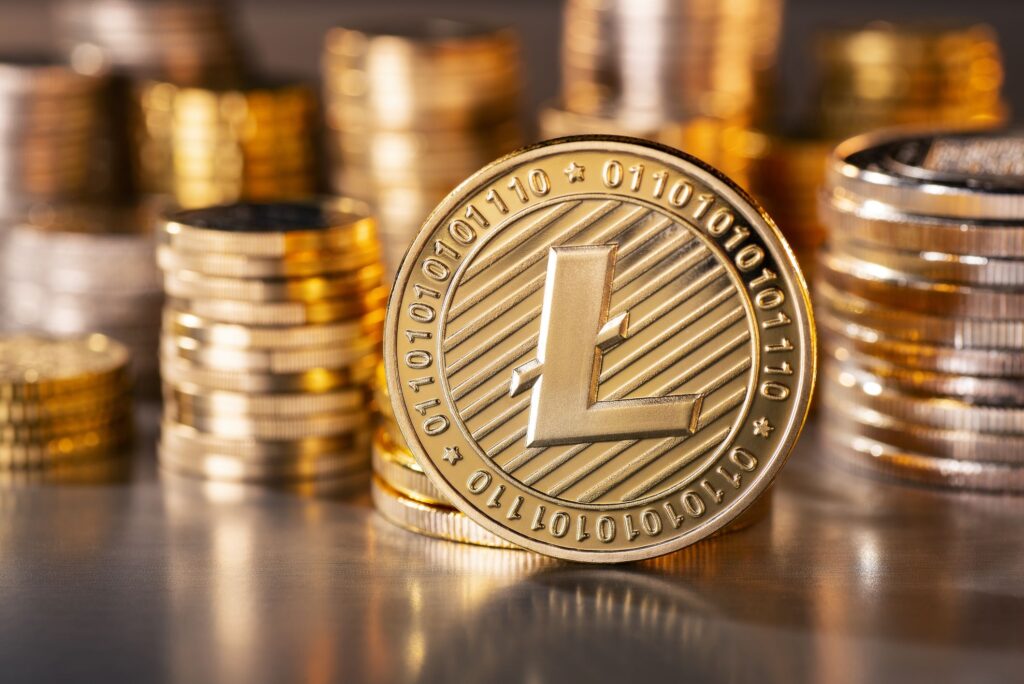Bitcoin (BTC) has been struggling to break above the resistance at $31,000, but it has managed to maintain support at $29,500.
This suggests that the price needs a catalyst to break out of its current range.
The upcoming Federal Reserve meeting on July 25 and 26 is an important event to monitor.
There’s a high probability of a 25 basis point rate hike, which may not cause an immediate market reaction as it seems to have been priced in.
However, any unexpected move by the Fed could push the price of Bitcoin out of its range.
Analysts expect the range to break soon, but they are divided on the direction of the breakout.
A downside break could lead to a significant decline, with some projecting a fall to around $20,000.
On the positive side, if Bitcoin’s price moves higher, certain altcoins could attract buyers.
Now, let’s take a look at the charts of the top five cryptocurrencies that may turn positive in the coming days.
For Bitcoin, it remains below the 20-day exponential moving average ($30,036) but has support at the 50-day simple moving average ($28,979).
This indicates that the bulls are not giving up, and their repeated efforts to prevent a decline might attract buyers.
If the price breaks above the 20-day EMA, it could rally towards the resistance at $31,000 and even open the path for a potential rally to $40,000.
Conversely, a drop below the 50-day SMA may suggest a bearish comeback, leading to a slump towards the support at $24,800.
Next, Chainlink (LINK) has been trading in a range between $5.50 and $9.50, with bulls managing to keep the price within this range.
The current upward momentum, with both moving averages turning up and the RSI in positive territory, indicates that bulls are in control.
If buyers push the price above $8.80, the pair may soar towards $9.50. On the downside, a break below $7.05 might lead to a drop towards $6.50.
Filecoin (FIL) is attempting to form an inverse head and shoulders pattern, which will complete on a break and close above the neckline.
READ MORE: Controversial Proposal Sparks Fierce Debate Among Members of Solana-Based Liquidity Network
The moving averages sloping upwards and the RSI in positive territory indicate a potential upside.
If the price breaks above the neckline, the pair could rally to $6.50 and eventually target $7.30.
A sharp downturn from the neckline and a break below the 50-day SMA could indicate the bulls losing control, leading to a drop to $3.29.
Synthetix (SNX) is attempting to break out from a basing pattern, but it’s facing resistance between $3.40 and $3.56. The fact that buyers prevent dips below the 20-day EMA shows positive sentiment.
If they clear the overhead zone, the pair might rally to the next resistance at $4.50.
On the other hand, a dip below the 20-day EMA might drag the price to $2.19.
Finally, THETA (THETA) is facing selling pressure near the 38.2% Fibonacci retracement level of $0.83.
However, the bulls have managed to prevent the price from sustaining below the 20-day EMA, indicating positive sentiment.
Breaking and closing above $0.83 could lead to further gains towards $0.91 and $0.99. Conversely, a plunge below the moving averages might bring the price down to $0.66.
In conclusion, the cryptocurrency market is closely watching Bitcoin’s price movement and the outcome of the Federal Reserve’s meeting for potential catalysts.
Analysts remain uncertain about the direction of the breakout, but altcoins like Chainlink, Filecoin, Synthetix, and THETA show both positive and negative scenarios depending on specific chart levels.
Other Stories:
Terraform Labs Faces Uphill Battle Amidst Allegations, New CEO Discusses Road Ahead
2023 Ranking: 4 Best Crypto Projects To Buy
Report Reveals Alarming Surge in Cryptocurrency Use by ISIS Terrorists
Terraform Labs, led by its new interim CEO, Chris Amani, is grappling with significant challenges caused by persistent accusations against former CEO Do Kwon.
Amani highlighted these obstacles during a recent Terra Community Talk on July 20, where he discussed the future challenges for the company.
He expressed concern that the frequent allegations against Kwon, who is currently detained in Montenegro and potentially facing extradition to South Korea or the United States, have disrupted the progress Terra was making.
A major setback occurred on June 19 when Kwon was found guilty of attempting to leave Montenegro using a forged Costa Rican passport.
This led to a four-month prison sentence for Kwon, despite his claim of not being aware of the passport’s forgery.
Amani sympathized with Kwon’s situation and hoped for his name to be cleared so that he could return and contribute to Terra’s projects once again.
Despite the difficulties, Terra is continuing to work on approximately nine projects in various stages of development, set to be released in the coming months.
READ MORE: OpenAI Unveils Android Version of ChatGPT
Amani asserted that these developments would focus on bolstering the utility of Terra’s native token, Terra LUNA.
Amani acknowledged that the cryptocurrency industry is currently facing challenges, and Terra’s rebuilding process would not be easy.
The scarcity of liquidity is one of the hurdles, as decentralized finance applications are competing with attractive risk-free returns.
Additionally, Terra faces competition from other layer 1 blockchain projects, with some boasting substantial treasuries that can lure developers with high salaries.
Despite the controversies surrounding the company, Amani revealed that a considerable number of employees have chosen to remain with Terra.
This loyalty indicates a commitment to weathering the storm and continuing the company’s mission.
In conclusion, Terraform Labs, under the leadership of interim CEO Chris Amani, is facing significant obstacles due to accusations against the former CEO Do Kwon.
However, the company is pushing forward with multiple projects in the pipeline to enhance the utility of its native token, Terra LUNA. While challenges persist in the crypto industry,
Terra remains committed to its vision, with dedicated team members determined to overcome the hurdles ahead.
Other Stories:
Nigerian Social Payments App Bundle Ceases Crypto Exchange Services
SEC Contemplates Appeal Over Controversial XRP Ruling
Bitcoin Laundering Couple Reach Plea Agreement with U.S. Authorities
Gabriel Bankman-Fried, sibling of former FTX CEO Sam Bankman-Fried, had devised a controversial survival plan for a potential global catastrophe, utilizing funds from the now-defunct cryptocurrency exchange.
According to a recent filing with the United States Bankruptcy Court for the District of Delaware, Gabriel’s scheme involved purchasing the island nation of Nauru, located in the Pacific, using funds that were allegedly misappropriated through the FTX Foundation.
Court documents revealed that the Foundation had engaged in various projects, which seemed to serve little purpose beyond enhancing the public image of the defendants.
These projects included a $300,000 book grant focused on “humans’ utility function” and a $400,000 grant to a YouTuber.
Gabriel’s ambitious plan to prepare for a potential apocalypse involved transforming Nauru into a refuge. He intended to build a bunker to safeguard “effective altruists,” anticipating a catastrophic event in which a substantial portion of the global population might perish.
The plan also involved establishing a lab dedicated to human genetic enhancement, further raising eyebrows about the venture’s intentions.
READ MORE: Vermont Department of Financial Regulation Issues Stark Crypto Warning
Prior to FTX’s demise in November 2022, Gabriel had been instrumental in founding “Guarding Against Pandemics,” a non-profit organization that aimed to be proactive in preparing for future pandemics, like the COVID-19 outbreak.
However, amid the cryptocurrency exchange’s bankruptcy, Gabriel reportedly stepped down from his role as executive director of the organization.
Meanwhile, Sam Bankman-Fried, the former CEO of FTX, was facing serious legal challenges.
His first criminal trial in the United States, scheduled for October 2, was set to address charges related to fraud, specifically concerning the commingling of funds between FTX and Alameda Research, another company associated with him.
It remained uncertain whether Gabriel would testify against his brother in the trial, but creditors in the FTX bankruptcy case considered the possibility of subpoenaing him to shed light on any financial benefits he might have received from the exchange.
In conclusion, Gabriel Bankman-Fried’s ambitious and ethically questionable plan to utilize Nauru as a survival haven in the face of a global catastrophe has brought significant scrutiny and legal consequences to the Bankman-Fried brothers and their involvement with FTX and the FTX Foundation.
The case continues to unfold, with the upcoming trial of Sam Bankman-Fried set to shed more light on the allegations surrounding the now-defunct cryptocurrency exchange.
Other Stories:
China’s Digital Yuan Soars: Business Travelers Can Now Pay for Flights with CBDC
As Litecoin’s halving approaches in less than two weeks, traders are expressing concerns about whether the anticipated scarcity effect will be sufficient to maintain LTC’s price above the $90 mark.
Currently, Litecoin’s price stands at $93.38, representing a 19% decline over the past 18 days.
However, the cryptocurrency has shown a positive performance of 31% throughout the year, with significant gains observed between June 29 and July 2, resulting in a 34% rally and pushing the price to a 14-month high of $115.
A worrying statistic is emerging from the derivatives market, indicating that a sharp correction may be on the horizon.
Historical data reveals that in each of the three instances where Litecoin futures open interest dropped below $500 million, substantial price drops of 38% or higher occurred. This pattern appears to align with the current scenario.
During the recent surge in Litecoin futures’ aggregate open interest, from $300 million on June 29 to $615 million on July 2, there was a notable increase in demand for leveraged futures contracts.
READ MORE: China’s Digital Yuan Soars: Business Travelers Can Now Pay for Flights with CBDC
Although the price reached a 14-month high on July 2, it subsequently declined 20% to $92. Despite the open interest remaining above the $500 million mark, which suggests buyers added margin to avoid liquidation, the risk of a sharp correction remains.
High active contracts (open interest) are generally positive as they allow for larger price swings due to leverage, but they also pose a risk of potential liquidations when traders’ positions are closed due to insufficient margin.
Looking back at the November 2021 crash and open interest, it becomes evident that Litecoin’s open interest dropping below the $500 million threshold has been a reliable indicator of investors’ waning interest, leading to drastic corrections in each instance.
On November 10, 2021, Litecoin’s open interest surpassed $500 million, coinciding with a six-month price high of $289.
Following the subsequent drop below $500 million on November 14, 2021, Litecoin’s price experienced a 48% crash in the following 24 days.
Similar patterns were observed in February and May 2021, where Litecoin’s open interest breached the $500 million threshold, resulting in significant price drawdowns shortly afterward.
These events suggest that if Litecoin’s open interest declines from its current $500 million level, there may be a potential 30% drawdown from $94 to $62.
While it is essential to consider historical trends, it is crucial for traders and investors to keep a close eye on Litecoin’s open interest to assess potential risks and make informed decisions in the volatile cryptocurrency market.
Other Stories:
Vermont Department of Financial Regulation Issues Stark Crypto Warning
Twitter is set to implement controversial changes that will affect unverified users on its platform.
In a tweet on July 21, Twitter Support announced that they will be introducing daily direct message (DM) limits for unverified accounts in an effort to reduce spam in DMs.
However, the specific daily limits have not been disclosed.
The announcement has garnered a negative reaction from users, both verified and unverified, who have expressed their opinions on the upcoming change.
One prominent comment by a user named Adam received over 1000 likes and criticized the move, stating that limiting basic features for users goes against the essence of Twitter.
Some users believe that this change is merely a tactic to push more users into subscribing to Twitter Blue, the platform’s subscription service, rather than genuinely combating spam.
Others have argued that the new restrictions could backfire, with verified accounts potentially using the opportunity to spam DMs since they won’t be subject to the same limitations.
This has led some to speculate that the change is more about Twitter’s financial interests, aiming to drive more users to pay for verification to cover their operational costs.
These changes come amidst a series of radical alterations to the platform since Elon Musk took ownership.
On July 1, Twitter implemented significant rate limits on the number of daily posts users could see, aiming to prevent data scraping and system manipulation.
This move led to the emergence of Meta’s Twitter alternative, Threads, which initially gained considerable traction but eventually followed suit by introducing its own rate limits on July 18.
In addition to these changes, Twitter had previously rolled out content monetization settings in April, allowing creators to monetize all types of posts on a global scale.
With Twitter constantly evolving under new ownership and facing various reactions to its alterations, it remains to be seen how these latest changes will impact user behavior and the overall dynamics of the platform.
Other Stories:
China’s Digital Yuan Soars: Business Travelers Can Now Pay for Flights with CBDC
Vermont Department of Financial Regulation Issues Stark Crypto Warning
Nigerian social payments app Bundle has recently announced the discontinuation of its crypto exchange services.
The decision, communicated through a statement on July 20 on the company’s blog, comes as part of a strategic restructuring effort to shift focus towards their payment solution called Cashlink.
According to the statement, the move was prompted by the observed growth of the Web3 and blockchain community.
Bundle’s shareholders deemed it necessary to pivot the business to meet the evolving needs of the ecosystem, concentrating on payment solutions that align better with the current trends.
With this change, users will no longer be able to register on Bundle’s platform, deposit assets into their Bundle wallet, or execute asset swaps within the wallet (except for Tether (USDT)).
Furthermore, users won’t be able to withdraw their assets with Cashlink unless they have Nigerian naira or other fiat currencies stored within their Bundle wallet.
The company has set a deadline for users to withdraw their assets from the app. Users are advised to complete this process on or before September 12, 2023.
To facilitate a smooth withdrawal, Bundle has outlined specific steps for users in Nigeria, Ghana, Kenya, and other francophone-speaking countries.
READ MORE: Vermont Department of Financial Regulation Issues Stark Crypto Warning
For users in these locations, the withdrawal process involves transferring their funds from Bundle to any preferred exchange.
Nigerian users, in particular, have the option to withdraw their naira using Cashlink or conduct bank transfers through P2P express. If their balance is less than $10, an easily accessible link is provided to initiate the withdrawal process.
The closure of Bundle’s crypto exchange arm follows the footsteps of another Nigerian crypto payment startup, LazerPay, which ceased its operations in April and made its intellectual property available for sale.
In conclusion, Bundle’s decision to shut down its crypto exchange services is driven by the desire to adapt to the rapidly evolving crypto and blockchain landscape.
By focusing on their payment solution, Cashlink, the company aims to cater better to the needs of the Web3 community.
Users are urged to withdraw their assets before the designated deadline, and specific guidelines have been provided for a seamless withdrawal process in various countries.
Other Stories:
2023 Ranking: 4 Best Crypto Projects To Invest In
China’s Digital Yuan Soars: Business Travelers Can Now Pay for Flights with CBDC
OpenAI recently made an exciting announcement on July 21, unveiling its plan to launch an Android version of the popular AI chatbot, ChatGPT. Following its successful release to iOS users in May, the company is expanding its reach to the Android platform.
The announcement was made via a tweet, where OpenAI also provided a preorder page in the Google Play Store.
This page allows interested users to register for the app’s installation once it becomes available for download.
OpenAI’s decision to launch on Android comes amidst the company’s continuous efforts to enhance the safety and transparency of its AI tools. Measures like content watermarking have been implemented to address concerns about misinformation generated by AI.
One of the key features of the Android app is its improved security measures when compared to the web version.
Additionally, it will offer users the convenience of conversation history synchronization across devices, a feature already available on the iOS version.
The move to introduce both Android and iOS apps puts OpenAI in direct competition with Microsoft’s Bing Chat, which also utilizes OpenAI’s GPT-4 technology.
These apps present an alternative way for users to test large language models (LLMs) without the need for a web browser.
Coinciding with OpenAI’s Android launch, Google has been rolling out its own chatbot called Bard in the European Union and Brazil.
Moreover, other competitors, such as Anthropic with its Claude 2 assistant, have been emerging. Claude 2 offers functionalities that surpass OpenAI’s paid version of ChatGPT.
Despite its prior popularity, ChatGPT witnessed a decline in traffic in June, marking the first such occurrence since its launch.
In a broader context, the crypto community has warmly embraced ChatGPT and other AI chatbots, with some enthusiasts even utilizing the technology to develop new tokens.
In conclusion, OpenAI’s decision to launch an Android version of ChatGPT marks a significant step in expanding the availability of this popular AI chatbot.
With its enhanced security measures and convenient features, it competes directly with other players in the market.
As the AI landscape continues to evolve, it will be interesting to see how ChatGPT and similar technologies shape the future of communication and information exchange.
Other Stories:
China’s Digital Yuan Soars: Business Travelers Can Now Pay for Flights with CBDC
2023 Ranking: 4 Best Crypto Projects To Invest In
Vermont Department of Financial Regulation Issues Stark Crypto Warning
A plea agreement has been reached between the husband and wife implicated in the laundering of billions of dollars worth of Bitcoin linked to the 2016 Bitfinex hack and U.S. authorities.
Ilya Lichtenstein and Heather Morgan are set to appear for an arraignment and hearing on August 3, following records filed with the U.S. District Court for the District of Columbia on July 21.
This agreement comes as they faced charges of money laundering conspiracy and conspiracy to defraud the U.S., and as part of the deal, they will be forfeiting digital assets associated with the case.
The criminal activities stem from the notorious hack of the cryptocurrency exchange Bitfinex in August 2016, during which approximately 119,754 Bitcoin (BTC), valued at $29,841 at that time, were stolen.
Subsequently, Lichtenstein and Morgan allegedly engaged in a series of intricate transactions across multiple accounts and platforms, laundering over 94,643 BTC of the stolen funds.
In February 2022, the authorities arrested the couple in New York and seized the BTC.
At the time of the hack, the confiscated Bitcoin was worth roughly $54 million, but by the time of the current publication, the value had surged to $3.6 billion.
The arrests and the subsequent seizure of laundered Bitcoin marked the most significant financial seizure ever carried out by the U.S. Department of Justice.
Though some small amounts of BTC connected to the hack have been occasionally traced and moved, only a limited portion has been returned to Bitfinex by the authorities to aid in the restoration of victims’ funds.
READ MORE: Vermont Department of Financial Regulation Issues Stark Crypto Warning
This plea agreement may bring some semblance of closure to the complex case, allowing the legal process to move forward while addressing the consequences of the vast cryptocurrency theft and its impact on the victims.
However, it also highlights the need for continued vigilance and security measures within the cryptocurrency space to safeguard against such high-profile hacks and money laundering schemes.
Other Stories:
2023 Ranking: 4 Best Crypto Projects To Invest In
China’s Digital Yuan Soars: Business Travelers Can Now Pay for Flights with CBDC










